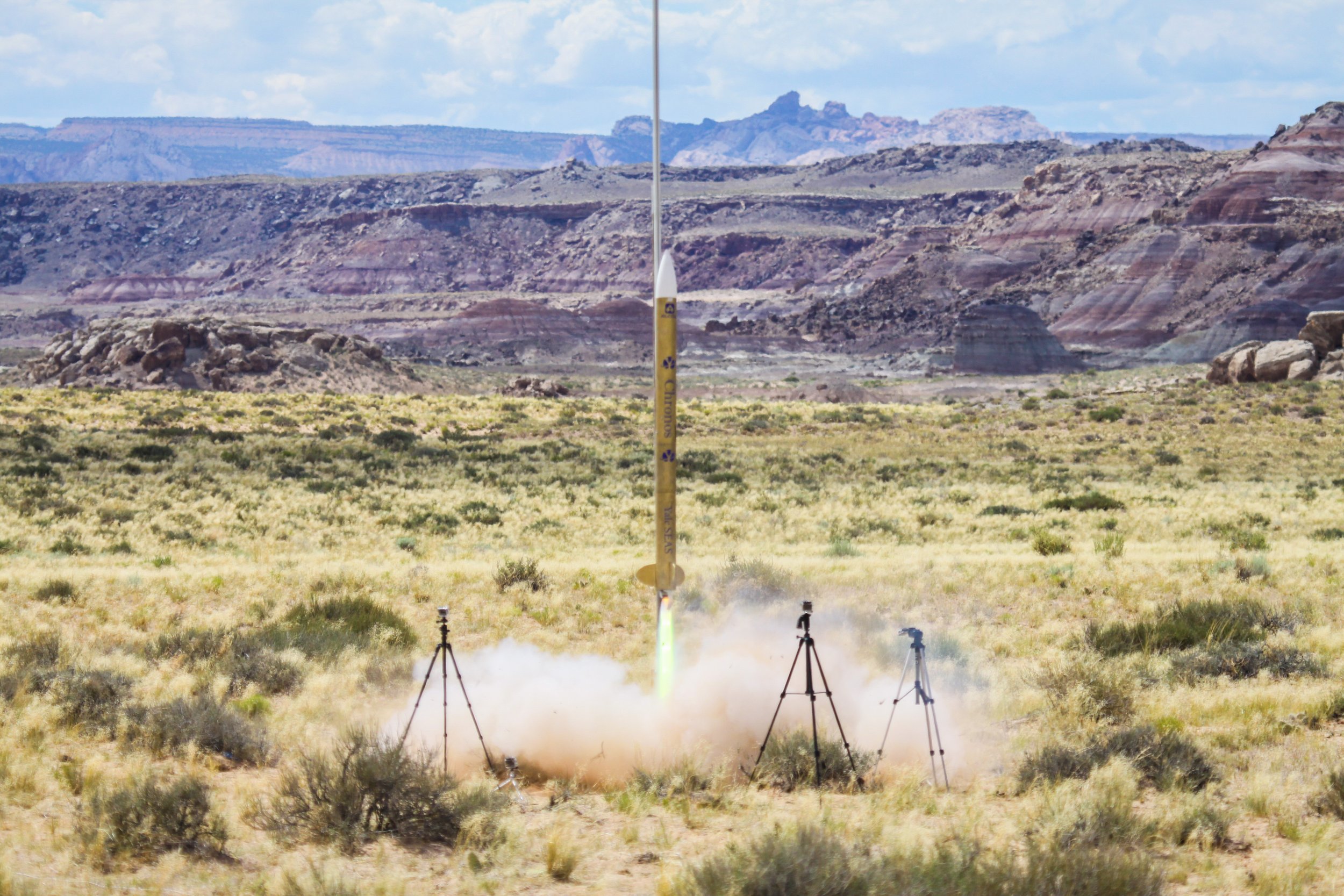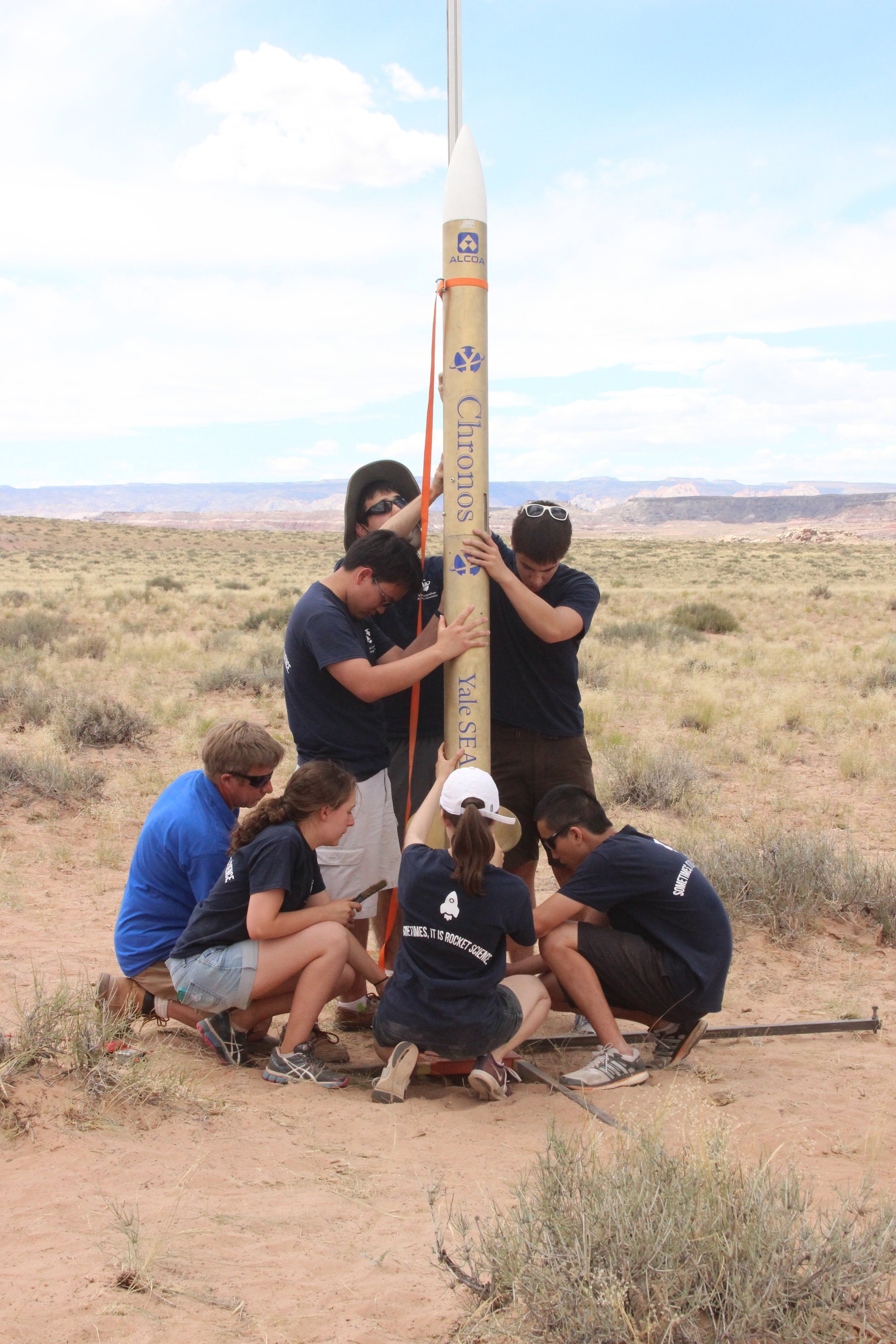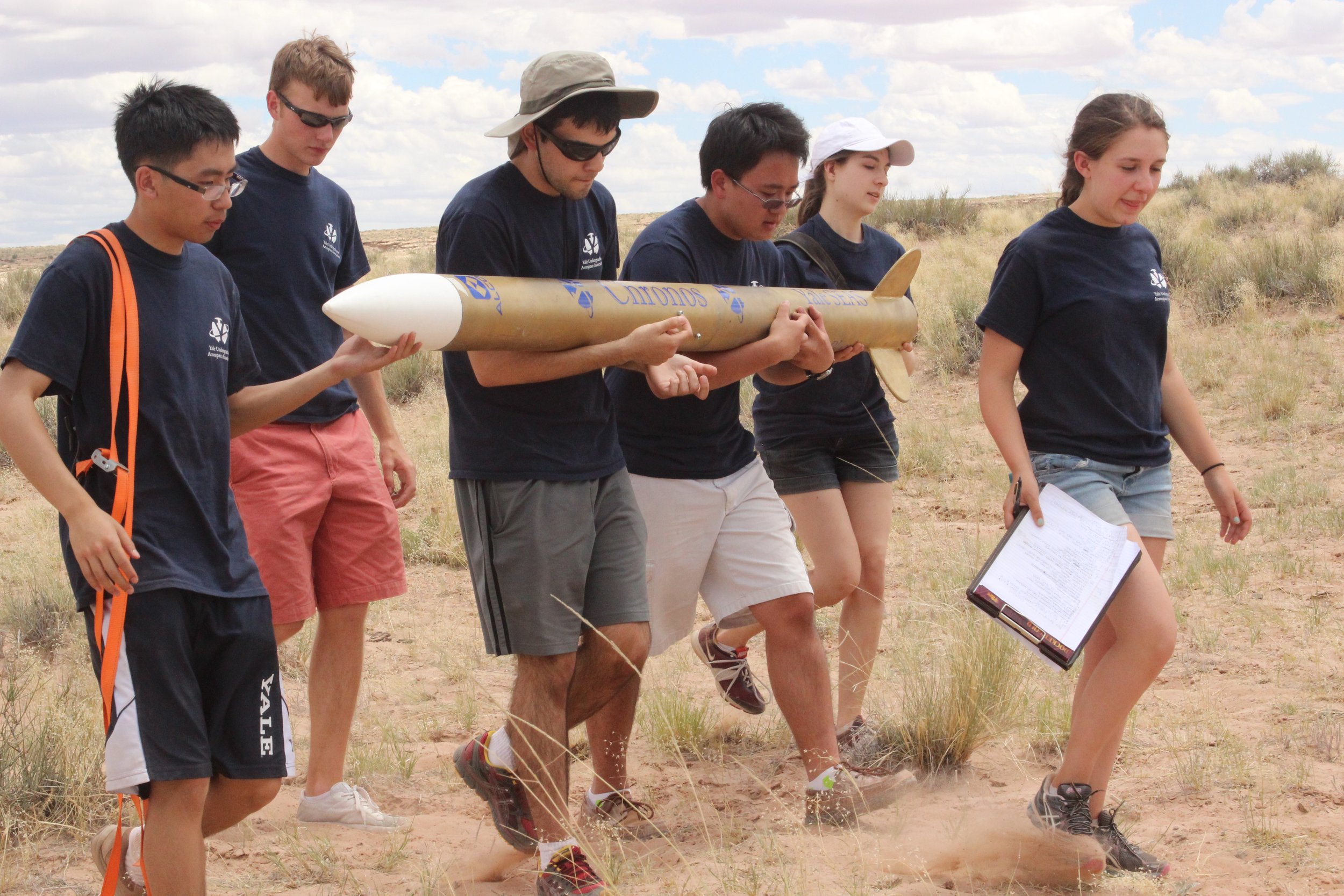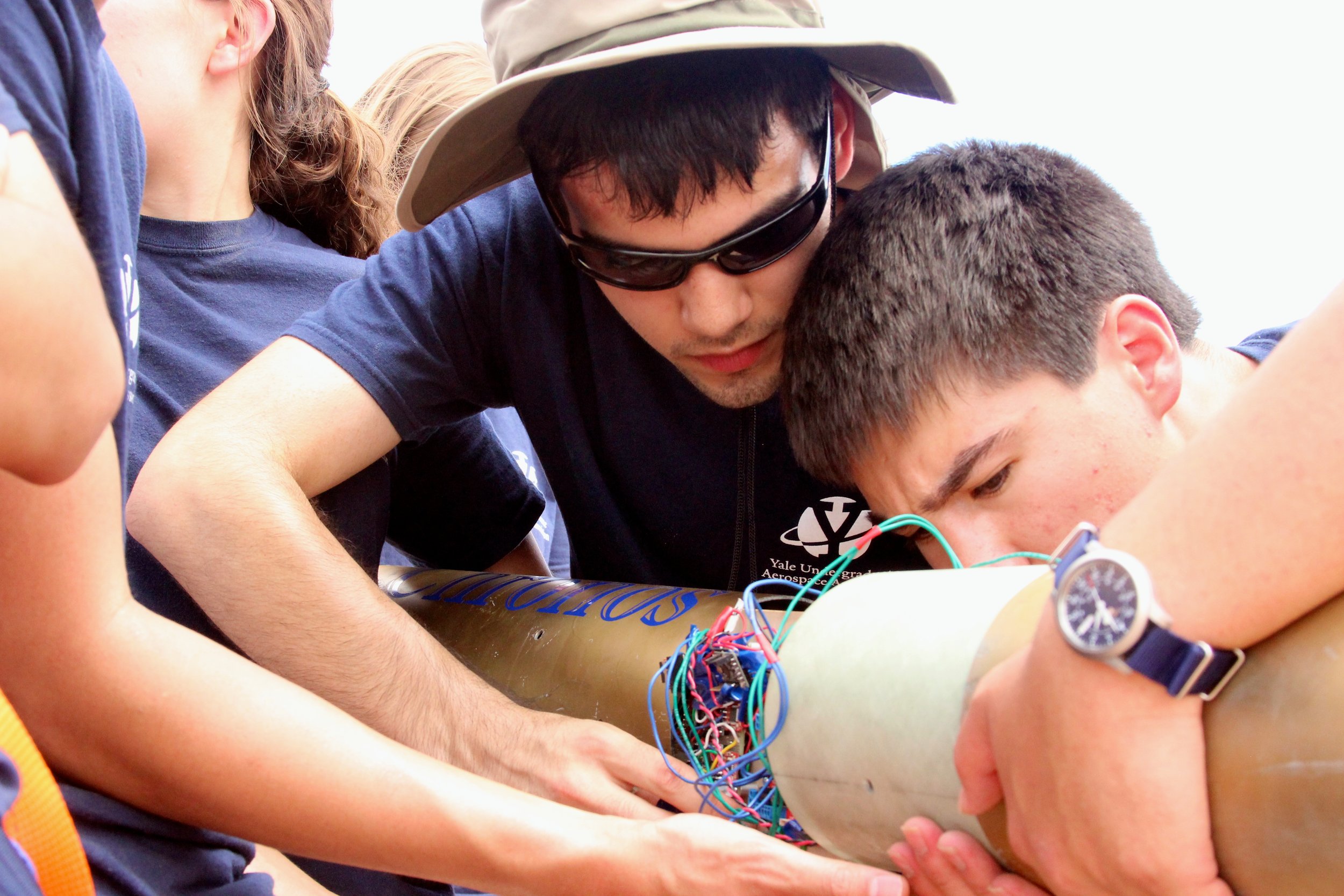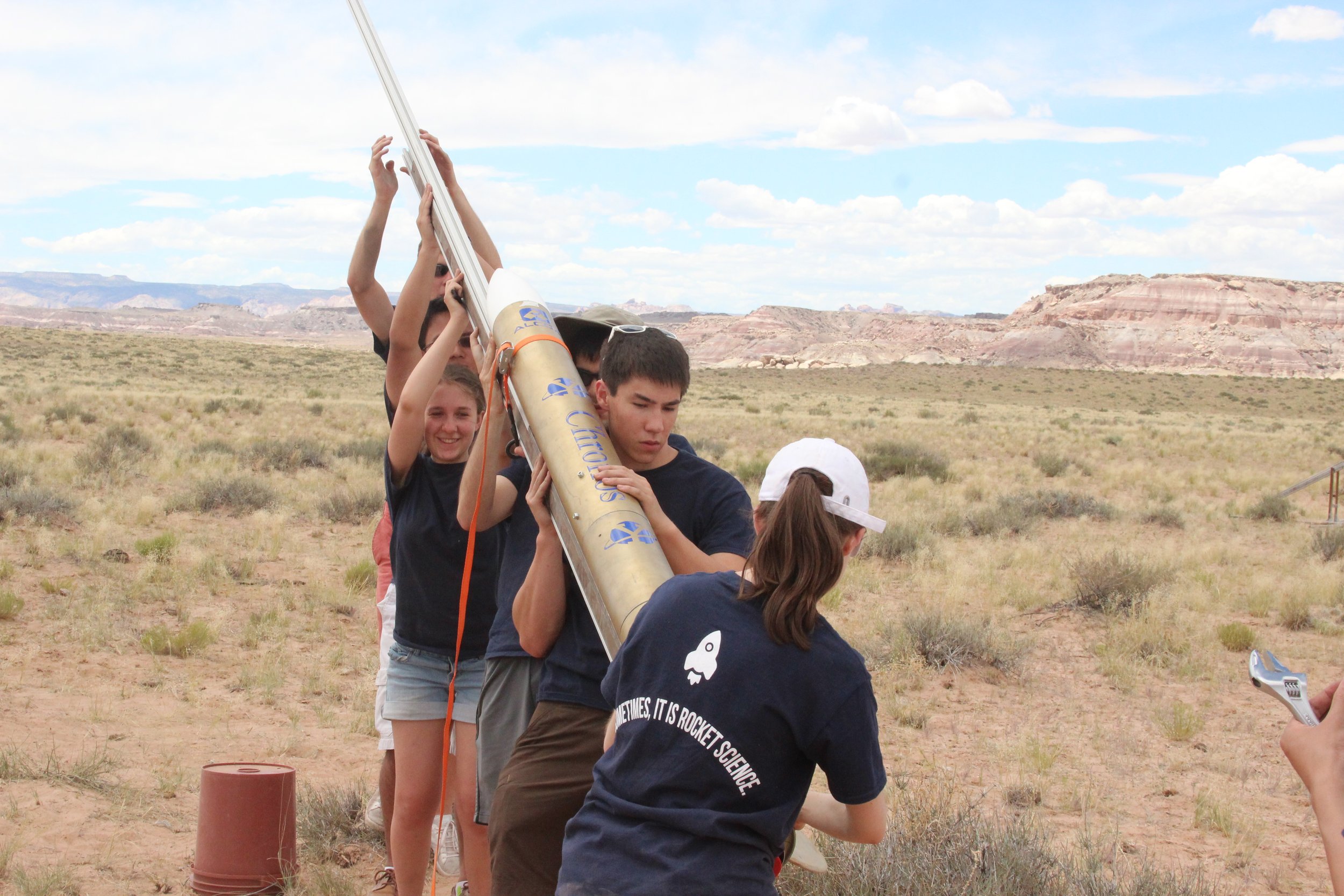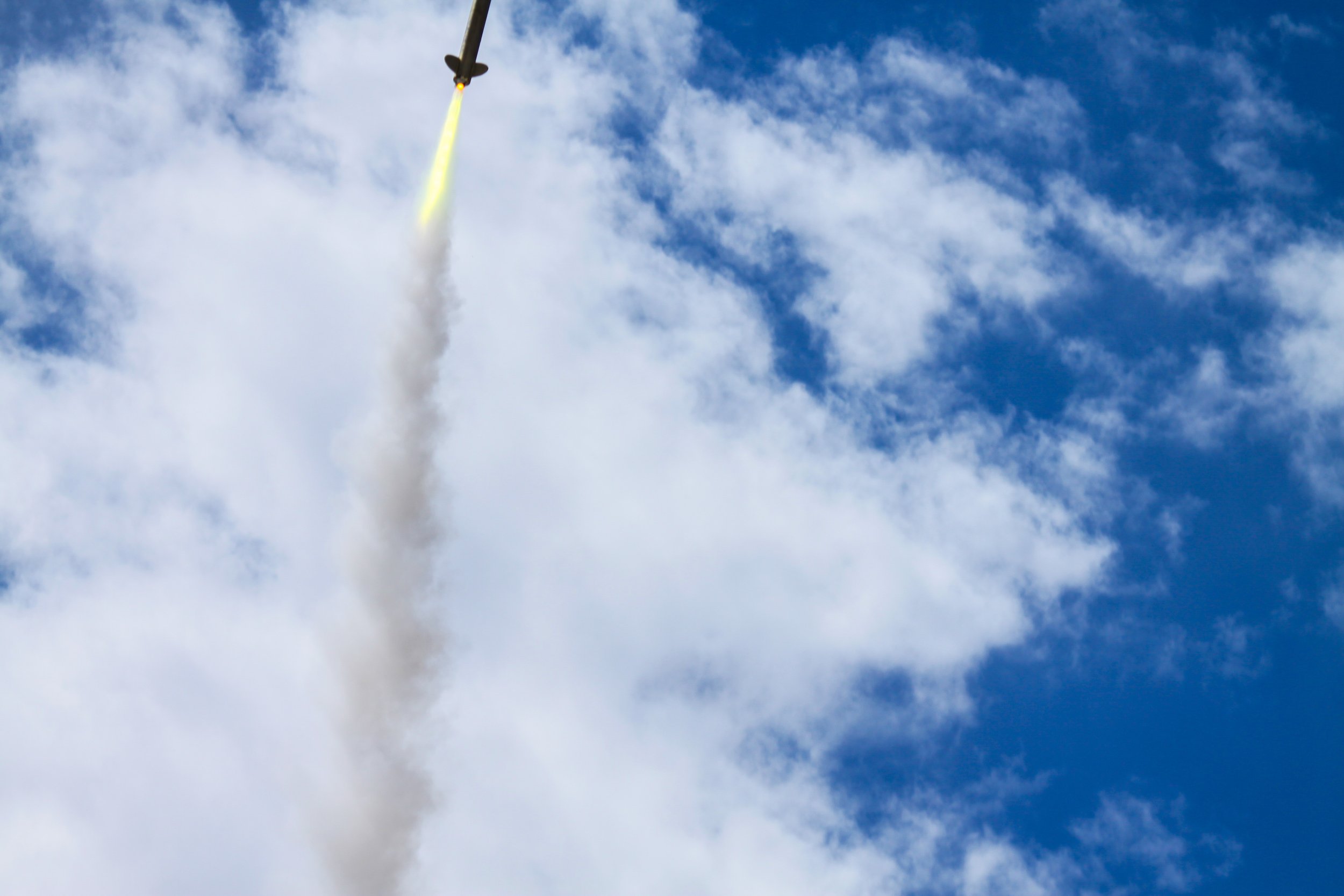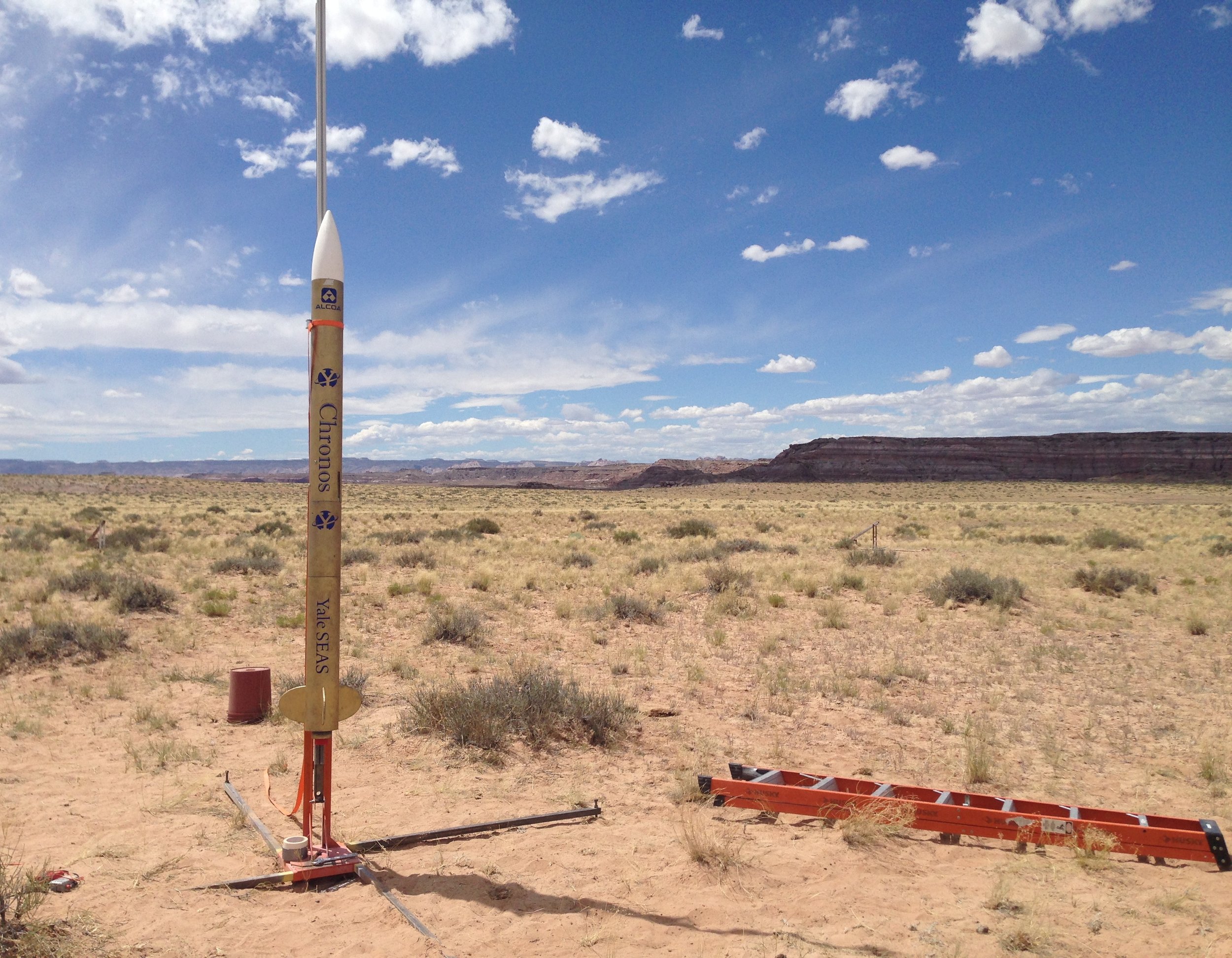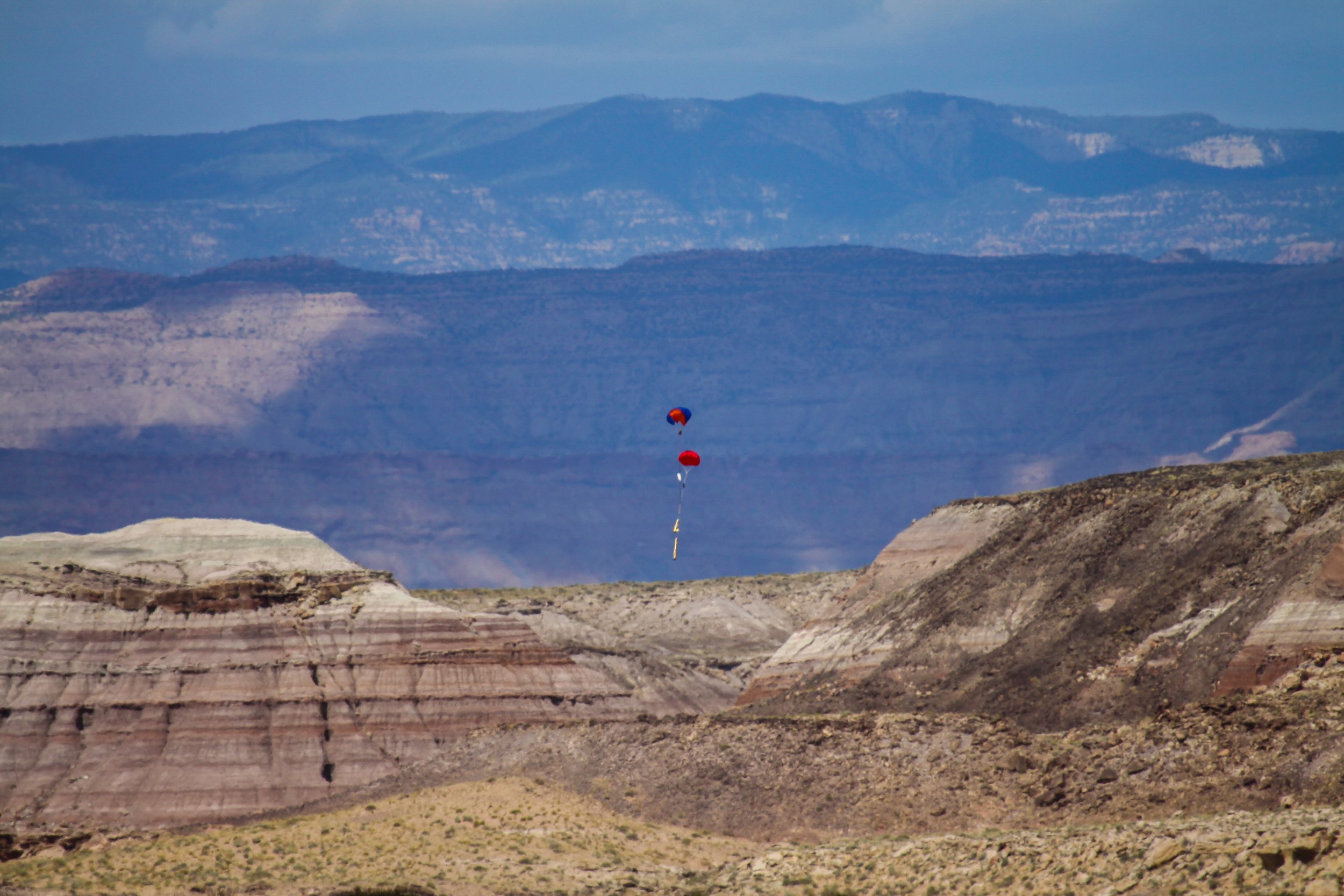IREC 2014
Purpose
The Rocket Competition team built Chronos, a rocket designed to fly 10,000 feet while carrying an atomic clock to measure relativistic effects, for the 2014 Intercollegiate Rocket Engineering Competition (IREC) hosted by ESRA. The team was awarded 2nd in the SDL Payload Competition (out of 36 teams) and additional recognition from the judges for the experimental subject.
Team
Most members of this team began the year with no rocketry experience, and many had no engineering experience at all. Over the course of the project, there was an emphasis on learning technical skills involved with rocket design and construction, such as CAD, simulation software, and carbon fiber layups. Non-technical skills were also taught, including documentation, trade studies, and factor of safety calculations. This project provided members with hands-on experience and many useful skills with direct applications in aerospace engineering and engineering.
Artemis Launch
On Saturday, 9th November 2013, the Rocket Competition team launched Artemis, its prototype high-power composite rocket. The 6′ 7” rocket used a K740 motor to reach 4829 feet. The team used RockSim software to design the rocket. The airframe was constructed out of fiberglass and tubing. The three fins at the base of the body were laser cut out of 5/16” plywood, and the nose cone was purchased from LOC Precision. The rocket carried a payload consisting of a GoPro sandwiched between two wooden sheets and attached to a parachute via a shock cord. This payload was intended to test the rocket’s payload deployment system for use in the competition rocket later this year. Unfortunately, the GoPro’s battery died before footage of the descent was recorded, but the payload deployment system worked as expected. Not only was this day the first rocket launch for many of the members, it served as a an opportunity to see the products of their hard work and a prelude to their coming success.
Payload Design
After the Artemis launch, the team began brainstorming ideas for the experiment the payload of their competition rocket would perform. The team decided to create an environment suitable to house an atomic clock in a rocket to test the effects of relativity during the rocket’s ascent. During the flights at the competition, the team would collect data on the conditions of the payload to test if the environment was suitable for an atomic clock built in a laboratory.
The team spoke on the payload in their summary report :
Here we present a novel, low-cost system for environmental control in a rocket during normal turbulent flight. Sounding rocket-based experiments are limited by the instruments used and by their resistances to external forces. These forces introduce random errors into the measurements, obfuscate the signal with noise, and are difficult to remove without prior calibration. The system presented here was engineered to deal with three of these forces: shock, vibration, and heat—and to reduce their impacts on a sample experiment to be conducted simultaneously. Industrial strength springs below the payload and foam under the instruments address errors due to shock while sorbothane pads between the rocket body and instrumentation reduce vibration. The system employs the special thermal properties of gallium to manage undesirable heat.
IREC 2014
The team made final preparations for IREC before shipping Chronos out to Green River Utah where the competition was be held. These preparations included a successful ground test which occurred within the month of shipment. The ground test involved fooling the altimeter into thinking the rocket was at apogee in order to signal for the deployment of parachutes.
Following three days at the competition, the team’s effort would reward them with 2nd Place in the payload category for carrying an atomic clock to measure relativistic effect, along with an award for measuring the relativistic effect.

